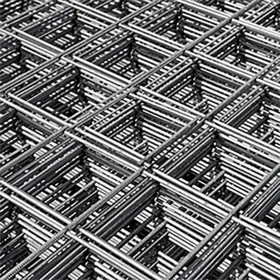Dec . 12, 2024 09:11 Back to list
wire mesh wire size
Understanding Wire Mesh and Wire Size A Comprehensive Overview
Wire mesh is a versatile material used in various industries, from construction and agriculture to manufacturing and filtration. Its design consists of a network of intersecting wires, forming a grid-like structure that can serve multiple purposes, such as providing support, filtering materials, or creating enclosures. One critical aspect of wire mesh is the wire size, which significantly influences its performance, strength, and application suitability.
The Importance of Wire Size
Wire size is a fundamental factor when selecting wire mesh for a specific application. It refers to the diameter of the wire used in the mesh, typically measured in gauges or millimeters. A lower gauge number indicates a thicker wire, whereas a higher gauge number signifies a thinner wire. The choice of wire size affects the structural integrity, flexibility, and weight-bearing capabilities of the mesh.
For instance, heavier and thicker wires are generally used in applications requiring high strength and durability, such as fencing for livestock or construction scaffolding. These thicker wires can withstand adverse weather conditions and prevent deformation under pressure. Conversely, lighter wires are more suitable for applications like filtration or light-duty enclosures, where flexibility and ease of handling are more critical than sheer strength.
Assessing Wire Size Key Considerations
When selecting wire mesh based on wire size, several considerations must be taken into account
1. Load-Bearing Requirements Determine the loads the wire mesh will need to support. Applications that involve heavy weights, such as industrial flooring or heavy-duty fencing, require thicker wires to prevent breakage or sagging.
wire mesh wire size

2. Environmental Factors The environment in which the wire mesh will be used can also influence wire size. For example, outdoor applications may expose the mesh to rust and corrosion, making it essential to choose a wire size that balances durability with resistance to environmental factors.
3. Aesthetic Preferences In some applications, such as architectural or decorative uses, the appearance of the wire mesh matters. Thinner wires create a more delicate look, while thicker wires provide a sturdier, more industrial aesthetic.
4. Application Specifics Different applications have varying size requirements. For instance, a wire mesh used for concrete reinforcement requires a different wire size compared to mesh used for animal enclosures. Understanding the specific needs of your project is crucial.
5. Manufacturing Standards Different industries have standards and specifications that may dictate wire size. Ensuring compliance with these standards is vital for achieving desired performance and safety.
Conclusion
Wire mesh is a crucial material with diverse applications, and understanding wire size is essential for making informed decisions in its selection and use. Whether you are involved in construction, agriculture, or manufacturing, recognizing the implications of wire size on strength, flexibility, and suitability will help you achieve the best results for your projects.
In conclusion, the right wire mesh can significantly enhance your project’s functionality and effectiveness. By carefully considering the wire size based on your specific requirements, you ensure that your mesh will meet the operational demands and provide the necessary support and resilience for the intended application. Through thoughtful selection, you can leverage the benefits of wire mesh to its fullest potential, yielding a durable and efficient solution for your needs.
-
Reinforcing Mesh: Core Material of the Construction Industry
NewsJul.07,2025
-
Welded Wire Fabric Reinvented for Modern Projects
NewsJul.04,2025
-
Superiority of Stainless Steel Woven Mesh
NewsJul.04,2025
-
Key Types of Razor Wire and Their Applications
NewsJul.04,2025
-
Durable Metal Fence Types for Security
NewsJul.04,2025
-
Best Materials for Livestock Fence
NewsJul.04,2025
products.







